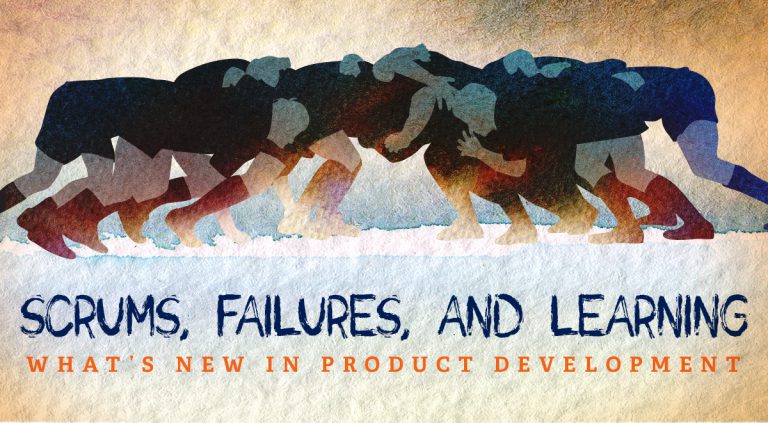
Using More Organic And Natural Approaches To Product Development
New product development processes have typically described several phases. For example, the famous Stage-Gate process has six stages separated by six defined go/no-go gates. Other methods have more or fewer steps. Here are a few of the more popular methodologies for new product development:

Comparison of Frequently Used Processes
There are some similarities in these processes: they are all linear, and they prescribe passing from one phase to another after meeting some defined decision standard. Similarly, researchers have called these methods too rigid, too time-consuming, and too expensive. Most organizations using these processes tend to modify them somewhat to fit their organizational culture and product/service category.
However, we are also beginning to see organizations moving away from these linear processes, and using more organic and natural approaches to product development. As Hirotaka Takeuchi and Ikujiro Nonaka wrote in Harvard Business Review, “In today’s fast-paced, fiercely competitive world of commercial new product development, speed and flexibility are essential. Companies increasingly realize that the old, sequential approach to developing new products simply won’t get the job done.”
There are three key (related) trends impacting new product development that you should be aware of:
- Design Thinking. Design thinking is a methodology for increasing creativity and innovation through corporate culture. Instead of new product development being the sole province of marketing, R&D, or Finance, everyone in the company contributes to the process. And indeed, the design thinking process is applied to just about any problem, not just new product development. The phases of design thinking are: empathize, design, ideate, prototype, test. But the process is not linear. Instead, it flows back and forth between phases as additional learning is gained and applied to the process. One of the other most significant differences between design thinking and the traditional new product development phases is that it starts with empathy: genuinely understand the human need to be addressed or solved.
- Fail fast, fail forward, fail frequently. For most people, failure is not a positive experience. However, in new product development, failure is a positive, if we allow learning to happen from each failure. As Dominic Basulto explains, “If you look at several of the recent trends in innovation — everything from rapid prototyping to the common Internet practice of releasing products early in beta — they are all about making rapid, iterative adjustments that uncover tiny failures and then correcting them more quickly than one’s competitors. Small failures are okay, as long as they lead to future success.” Some proponents of this methodology like to say that humans must change their relationship to failure to see it as an opportunity to be celebrated.
- Scrum. Scrum, from rugby, is a new approach to product development that focuses on faster, sequential, development. Part of the Agile playbook, scrum processes feature these traits:
- Self-organizing project teams: interdisciplinary teams move fluidly into and out of the project stream as their skills and expertise bring value. The team maintains control of the process while management exerts minimal control.
- Built-in instability and overlapping development: With no distinct phases or methods, the project moves forward as it needs to move forward to bring forth a product. Engineers might begin product development before the market assessment is final, the product concept test might follow on launch planning activities.
- Leveraged Learning: teams stay in touch throughout the process so that they can react quickly to new and changing information. This “leveraged learning” also results in rapid development of new skill sets and expertise, as well as a faster transfer of learning throughout the organization.
These “new” new product development processes are a direct response to the hectic pace of change in our current world and competitive environments. As a result, they also require different management approaches and may test some of our more traditional ways of organizing and leading. Companies must develop new products faster, and with more flexibility. That means using a much more dynamic process, more trial with more acceptance of failure, and much more organizational learning and communication.
Whether your process is linear or scrum, you need marketing research to generate ideas, test concepts, and evaluate market acceptance. Call Clear Seas Research for help with your new product development.

One Comment on “Scrums, Failures, and Learning: What’s New in Product Development”
Very impressed by the three trends you have defined also if you have done thorough research beforehand then it doesn’t matter if you are providing agile software testing services or some other approach to provide testing services during a Product Development. Quite an article. Keep posting.